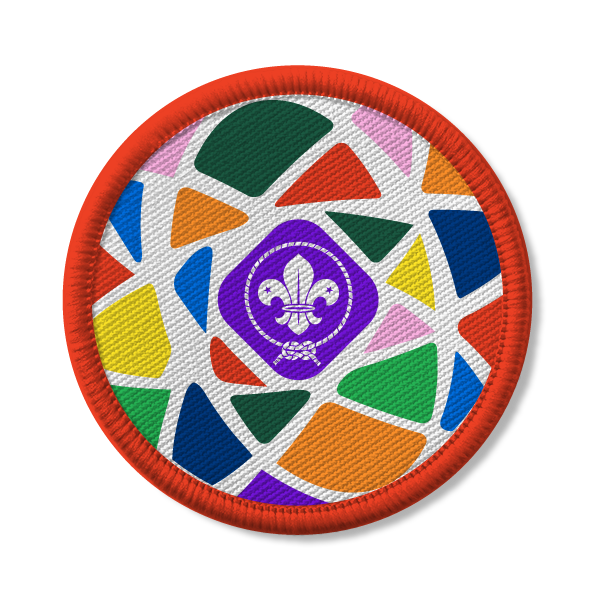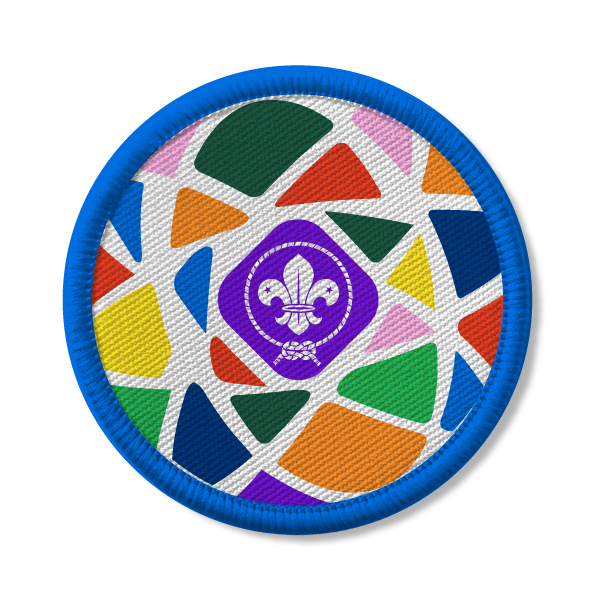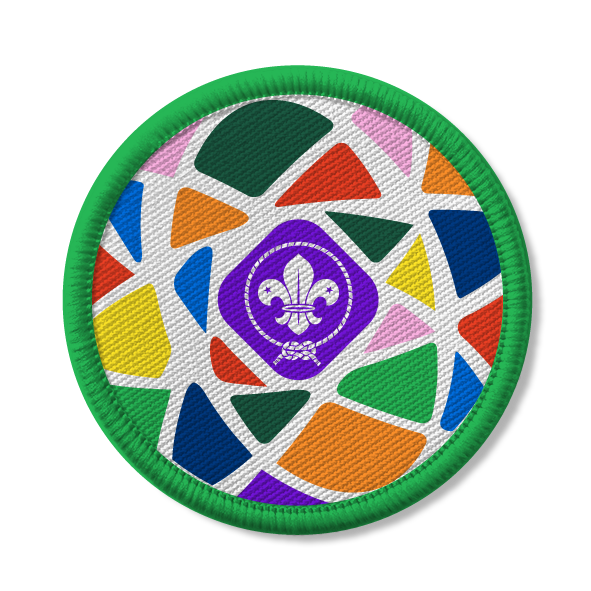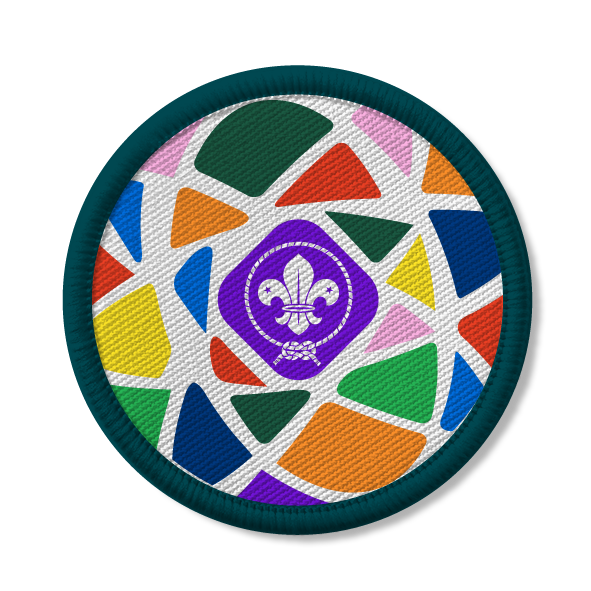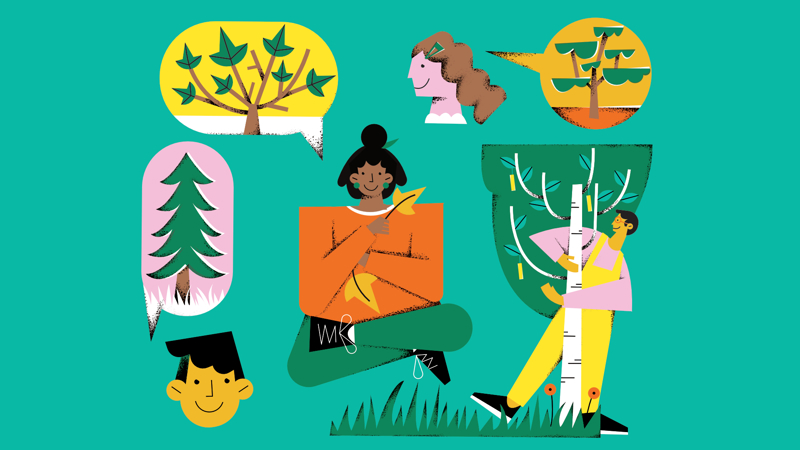
Play Guess the Tree?
You’ll need
- Scissors
- Copies of the Leaf guesser and tree cards
Love trees?
If you want to take your love of trees further, why not check out our partnership with the Green Tree Badge. This will give you the opportunity to engage with trees in a new way and earn external badges along the way!
Green Tree BadgeBefore you begin
- Use the safety checklist to help you plan and risk assess your activity. Take a look at our guidance to help you carry out your risk assessment, including examples.
- Make sure all young people and adults involved in the activity know how to take part safely.
- Make sure you’ll have enough adult helpers. You may need some parents and carers to help if you’re short on helpers.
Planning and setting up this activity
- Make sure the outdoor area you visit is accessible for everyone, choosing a suitable place for drop off and collection. You may need to think about avoiding steps or steep gradients or including frequent breaks.
- Check the forecast and sunset times, but be prepared for the weather to change. It’s best to run this activity on lighter evenings, such as in summer.
- Make sure everyone knows where and when to meet, knows what to bring and comes dressed for the weather and the task. People should wear outdoor clothing and sturdy shoes.
- It might be a good idea to have some spare equipment, such as gardening gloves, for those who’d prefer not to get their hands too dirty. Make sure there’s somewhere everyone can wash their hands after the activity too.
- Find a wood that has a variety of trees – try to make sure that there are at least some trees that are on the leaf spotter sheet.
- Print and cut out the copies of the ‘Leaf guesser and tree cards’.
- In your meeting place, set out the ‘Tree cards’ somewhere they can be seen by the whole group. You could stick them up on the walls or to a board.
Name that tree
- Gather everyone together where they can see the ‘Tree cards’.
- Everyone should choose one of the trees and remember it – they shouldn't tell anyone which one they’re thinking of.
- Choose one person to start and think of the tree they chose.
- Everyone else should think of yes or no questions that they can ask that person to help them guess which tree that person’s thinking of, such as:
-
- Does it have needles instead of leaves?
- Does it have fruit?
- Does it have thorns?
- Does it have white flowers?
- You could use the descriptions of each tree for some more specific things to ask about, such as:
-
- Are the needles joined in pairs? Needles can be singular, pairs, or clusters when joined to the branch.
- Does it have compound leaves? Compound leaves are made from smaller leaflets joined to the branch by one stalk.
- Are the edges of the leaf serrated? Serrated leaves have pointy, saw-like teeth.
- As the person who’s thinking of their tree answers questions, it’ll narrow down the possible options until the group can guess the correct tree.
- Someone from the guessing team could remove the ‘Tree cards’ that have been ruled out to make it easier to keep track of the remaining options. For example, if the question is: ‘Does the tree have needles instead of leaves?’ and the answer is ‘yes’, all of the trees that have simple or compound leaves can be removed.
- If a person guesses correctly, someone should replace the ‘Tree cards’ and everyone should try to guess the tree the person who guessed chose in the same way.
- Play a few rounds so that everyone can familiarise themselves with the trees and their characteristics.
Take it outside
- Now, head outside somewhere where there are trees and choose one to identify as a group.
- Everyone should use the ‘Leaf guesser’ key to ask the questions again and note the answers down on some paper. By narrowing down the options, someone should be able to guess the type of tree.
- Keep going until you’ve identified a few trees - can you spot one of each for the types of tree or leaves on the sheet? Some people might find it easier to look out for one type of tree at a time, and then focus on a new one once they’ve spotted it.
- If the tree you’re looking at doesn’t seem to fit any of the examples given, try the Woodland Trust Tree ID app on a mobile device. The app has over 70 different species of tree.
- Alternatively, everyone could carefully draw or photograph the leaves, branches, and any seeds or flowers on or around the tree to help them identify it later.
- At the end of the session, remind everyone try to remember the different kinds of leaves and trees when they’re out and about.
Reflection
We think that the first tree-like plants evolved around 360 million years ago. From those few early trees, thousands of species evolved and formed the varied woody giants we see today. Being able to identify different plants and trees is a great skill. It helps us to get in touch with the world around us and take time to appreciate it.
Everyone should look at or think about a tree nearby. The process for each tree in a species is the same: it grows from a seed, heads straight up, and begins to grow leaves, branches, and sometimes flowers or fruits.
Most trees essentially turn out the same. But just like us, they are in fact all different and unique. A tree will grow in its own way, reacting to changes in light, the land around it, and the other plants and animals that interact with it. The way that we react to the world around us (and the people in it) also affects how we grow and become who we are.
Just like trees, let’s try to offer help to those who need it, like the trees that shelter wildlife with branches and grow flowers and fruits to eat. Perhaps kindness and belief could be like roots that help people stand up for the things they think are right. People’s goals could be like the canopy branches that grow and climb higher and higher.
Safety
All activities must be safely managed. You must complete a thorough risk assessment and take appropriate steps to reduce risk. Use the safety checklist to help you plan and risk assess your activity. Always get approval for the activity, and have suitable supervision and an InTouch process.
- Outdoor activities
You must have permission to use the location. Always check the weather forecast, and inform parents and carers of any change in venue.
- Animals and insects
Be aware of the risks before interacting with animals. Be aware of anyone with allergies, and make alternative arrangements for them.
- Gardening and nature
Everyone must wash their hands after the activity has finished. Wear gloves if needed. Explain how to safely use equipment and set clear boundaries so everyone knows what’s allowed.
- Hiking and walking
Follow the guidance for activities in Terrain Zero, or the guidance for each the adventurous activity.
- Near water
Manage groups carefully when near water. The guidance on activities near water will help you to keep your group safe.
- Road safety
Manage groups carefully when near or on roads. Consider adult supervision and additional equipment (such as lights and high visibility clothing) in your risk assessment.
- To make this activity easier or harder, you could add or remove some trees.
- To make this activity easier, you could have some pre-written questions for people to choose from to ask in the game.
When taking young people out and about, make sure the route you take is accessible for everyone. Try to avoid unsuitable terrain and obvious hazards and obstacles.
All Scout activities should be inclusive and accessible.
You could research tree names and find out who discovered different trees and how they got their name. How many of these trees can you find in your local area?
If you have time, why not make a tree map by drawing your own map and marking any big, interesting or beautiful trees nearby? If there are lots of different types of tree, you could give each one a sign, number or letter and create a key, just like on an OS map.


